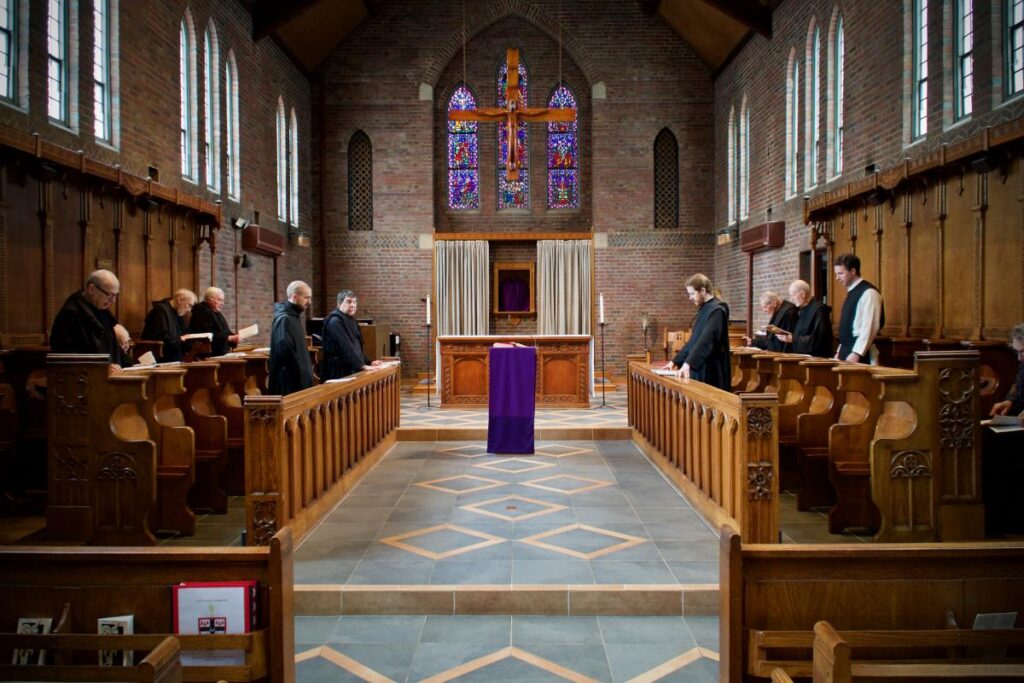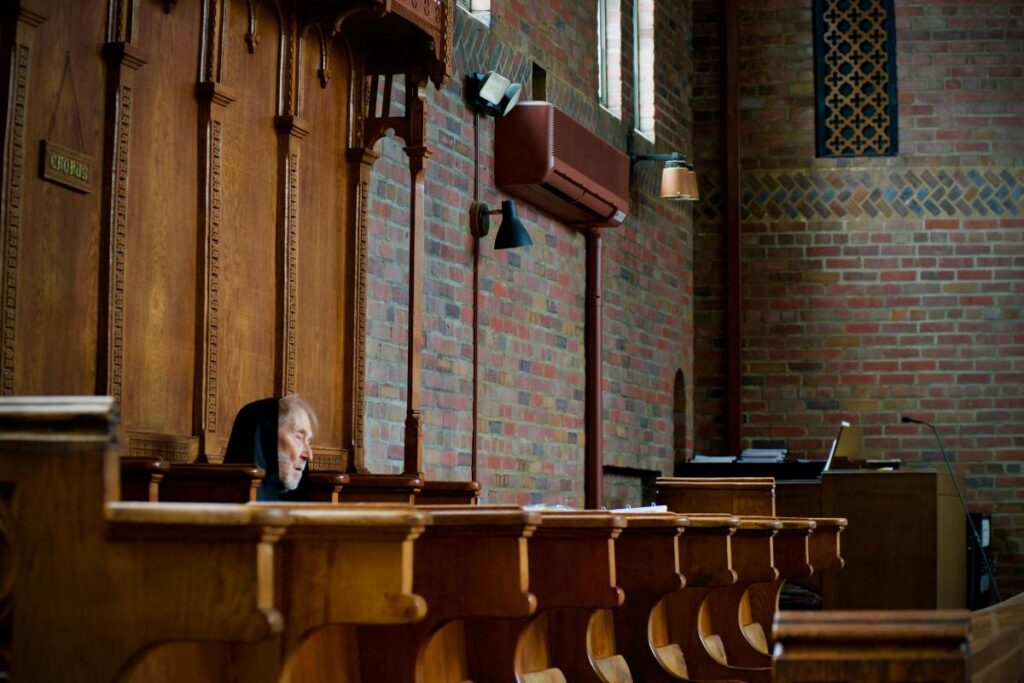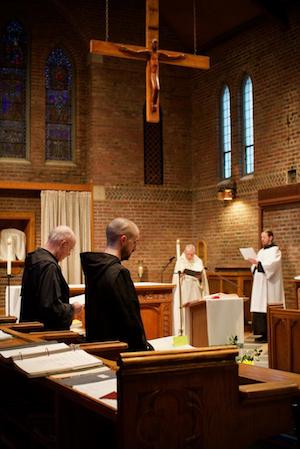Prayer in the Benedictine Life
A classic definition of prayer speaks of it as “the raising of the mind and heart to God.” If one understands prayer only in this way, it will be thought of as an intermittent activity, something one does only when actively turning one’s thoughts and affections Godward. In the monastic tradition, it would be more accurate to speak of prayer as allowing everything that one experiences or does to be seen in the light of God’s loving, providential care. Then one’s entire life tends to become a single great prayer, which is what monks have always sought by placing themselves in a setting in which all the activities of the day lead harmoniously to an abiding and prayerful mindfulness of God.
Within the daily schedule there are, of course, certain periods when activities customarily called prayer take center stage. One of these is the Liturgy of the Hours, when Psalms from the Old Testament, readings from the Bible or other religious texts, and periods of silent reflection allow monks of our own time to continue a tradition of praising God by communal prayer that goes back to the earliest days of the Church. At St Anselm’s we gather in the abbey church four times a day to sing the Psalms, attend to the readings, and offer petitions for the needs of people throughout the world. In addition, each morning we celebrate the Church’s greatest prayer, the Eucharist, at which we renew our own self-offering to God in union with that of Jesus Christ.
These services of communal prayer are complemented by periods when each monk spends time alone with God in meditation and in the prayerful reading of the Scriptures. This latter practice, which St Benedict called lectio divina (“divine reading”), refers to a way of approaching the Bible in which the emphasis is not on how much one can read at a single sitting but on how deeply one goes in penetrating the meaning of a passage, asking in particular how the text is addressing one personally, here and now. Such reflection will regularly provide a monk with “prayer thoughts” that stay in his mind throughout the day.
One of the traditional strengths of the Benedictine way of life is that it can accommodate a wide variety of persons. There is an expansive freedom in St Benedict’s Rule, including his treatment of prayer. His 52nd chapter, one of the shortest but most beautiful of all, concerns the oratory of the monastery. In it he writes that at the end of the Liturgy of the Hours, “all should leave in complete silence and with reverence for God, so that one who may wish to pray alone will not be disturbed by the insensitivity of another. Moreover, if at other times someone chooses to pray privately, he may simply go in and pray, not in a loud voice, but with tears and heartfelt devotion.” This is the spirit of prayer that we at St Anselm’s seek to cultivate as we carry on the Benedictine tradition at the beginning of the 21st century.
– Dom James Wiseman



